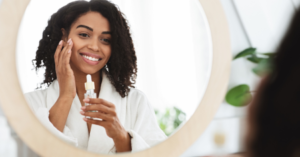Affiliate Disclosure: This blog may receive a small commission at no extra cost to you, for purchases made via affiliate links. If you decide to support our blog in this way, I thank you!
My skin would be a mess without a good chemical exfoliator (as opposed to a manual exfoliator such as a washcloth that only affects the epidermis of the skin.) It tends to be oily and sluggish, but my once-a-week mild glycolic acid peel does wonders to polish and brighten my mug! Exfoliating with a mild acid should be a must in everyone’s beauty regimen, regardless of how simple or intricate your routine may be.
The many benefits of exfoliating regularly (twice a week to be specific), include sloughing off dead skin cells, creating an overall brighter and more even complexion, as well as allowing other products in your routine to sink into your skin a lot better. But did you know that AHAs can penetrate into the dermis and help to build collagen too (we’ll talk more about that later…)?
AHAs, in particular, do all of the above and more. But before we get into the benefits, here’s a quick overview on what you need to know about the hero ingredient:
What are AHAs?
Alpha hydroxy acids (commonly known as AHAs or Fruit Acids), are a group of plant-derived acids, and are typically found in toners, serums, creams, as well as more concentrated treatments like chemical peels.
It’s a mistake to think that fruit acids act only on the surface of the skin. They actually have the ability to penetrate into the dermis as well, as discussed in this article on the National Institutes of Health :
The well-known benefits of AHA’s include exfoliation, moisturization, reduction of fine lines and wrinkles, collagen synthesis, firming and skin lightening.
AHAs also come in many forms. Depending on your skin type and its current condition, you’ll want to familiarize yourself with the following types of AHA before you add it to your daily routine:
Lactic Acid
This popular type of AHA comes from the bacterial fermentation of sugar or other types of carbohydrates, and is amazing for improving the skin’s texture and overall skin tone.
What’s more, it does a great job of minimizing the appearance of pores while lightening sun spots and other forms of hyperpigmentation. If my skin is ever on the dry side, I turn to lactic acid for a gentle peel that leaves me glowy but not irritated.
Glycolic Acid
Here’s another popular ingredient you may find on the shelves of your favorite drugstore. Derived from sugar cane, glycolic acid is known as the AHA with the smallest molecular size, which enables it to penetrate into the skin most easily.
That means you need to acclimate your skin to it slowly or you might get some irritation or dryness. However it is worth the trouble in my opinion, as in addition to targeting dark spots and acne, it has also been shown to encourage new collagen growth.
Tartaric Acid
Sourced from grapes or tamarinds, tartaric acid is one of the primary acids found in wine. Besides treating texture and combating signs of aging, this ingredient has some powerful antioxidant properties. Those with dry skin will also benefit from this type of AHA, as it helps bind moisture to the skin.
 Here’s to grapes giving us good wine AND good skin!
Here’s to grapes giving us good wine AND good skin!
Malic Acid
Malic acid is another fruit-based AHA, only this time found in apples. An important thing to note about this specific acid is its molecular size. Compared to lactic and glycolic acid, malic acid is a significantly larger molecule, making it a great option if your skin is on the sensitive side. As the acid won’t penetrate the skin as easily as the other AHAs, it will have a more gentle exfoliating effect overall.
AHAs vs. Other Acids
If you’ve been reading up on AHAs in your quest for new skincare, chances are you’ve already encountered other members of the hydroxy-acid family: beta hydroxy acids (BHAs) and poly hydroxy acids (PHAs). While this post focuses on AHAs, I felt that it was worth mentioning the following actives for those with more complex skin concerns or a specific skin type:
Salicylic Acid (BHA)
As the predominant BHA, it’s likely that you already have this ingredient in your skincare stash—especially if you’ve got oily or acne-prone skin. Because BHAs are oil soluble, they are able to penetrate deep into the pores of the skin.
Derived from willow tree bark, wintergreen oil and sweet birch, BHAs are usually the more favored acid for cleaning out excess oil and sebum, as well as reducing redness and inflammation.
Depending on how it’s formulated, BHA can be very hydrating , not drying, which is surprising. Stay tuned below for a recommendation on an exceptional BHA product.
Gluconolactone (PHA)
You might remember “poly” from your high school chemistry class, which translates to “many.” Because it contains several hydroxyl groups, this acid not only has exfoliating properties, but also serves as a humectant, which attracts water to the skin.
Gluconolactone, in particular, is the latest acid gaining traction in the beauty space. Made from gluconic acid that naturally occurs in plants, fruits, wine and honey, this buzzy ingredient has been a lifesaver for skincare junkies with mature or highly sensitive skin.
Your Guide To Exfoliating Products
When it comes to chemical exfoliants like AHAs, BHAs and PHAs, there are many things to take into consideration before making a purchase. While the acids mentioned above have overlapping benefits, each does have a function that it performs best.
Another important thing to consider would be concentration of the acid, which has an impact on overall efficacy as well as compatibility with your skin. You may find several products that combine two (or more) acids, which will allow you to reap the unique benefits of each active ingredient.
With so many new products being released, it’s easy to get overwhelmed by the plethora of options available.
So if you’re still figuring out where to start, below are some highly-rated products you can check out, along with some interesting Old Hollywood skincare routines that stars swear by (that is, before hydroxy-acids were officially discovered).
For Smooth Texture
As someone with oily/combination skin (with the occasional splash of hormonal acne), a combination of AHAs and BHAs have been life-changing for me. I particularly love this exfoliating treatment from Good Molecules, which combines glycolic, lactic and salicylic acids. Not only does it do a good job in exfoliating dead skin cells, but it helps to get rid of pesky blackheads too, which gives my pores a minimized appearance.
According to the makers of this product, the formulation is gentle enough to use three times a week, but for those with sensitive skin, you may want to reduce frequency for the first few weeks to build tolerance.
Joan Crawford’s Pore Shrinking Method:
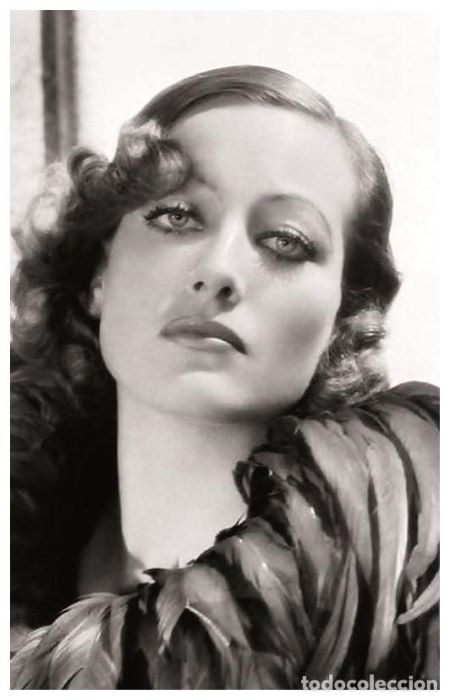 Invisible pores were extremely important for many actresses back in the day, especially for 40’s film star Joan Crawford. It was known that she would stick her face in a sink of ice cubes every morning, followed by 25 splashes of icy water. She said that this method helped her shrink her pores and boost circulation at the same time. You might want to think twice about doing this is you have thin, fragile skin!
Invisible pores were extremely important for many actresses back in the day, especially for 40’s film star Joan Crawford. It was known that she would stick her face in a sink of ice cubes every morning, followed by 25 splashes of icy water. She said that this method helped her shrink her pores and boost circulation at the same time. You might want to think twice about doing this is you have thin, fragile skin!
Crawford also required that her movie sets be kept cold so that her face would appear tight and sculpted. What we won’t do for beauty eh?
See Joan Crawford in her glorious youth in the film Dancing Lady, 1933.
She stars with two very important men in her life: Cary Grant with whom she had a lifelong love story, and Franchot Tone, who became her second husband in 1935.
For Even Skin Tone
Hyperpigmentation can be caused by a lot of factors, such as sun exposure, acne, and the passage of time. Luckily, there are many remedies to combat and heal hyperpigmentation, not the least of which is frequent use of chemical exfoliants.
Being the most potent AHA, a product made from glycolic acid alone may be daunting for many, especially for those with dry or sensitive skin.
While my skin can usually take stronger formulations, I’ve had instances where it dried up a bit whenever I tried to increase glycolic acid frequency, and would always need to follow up with a green tea serum or moisturizer to prevent it from flaking.
To my pleasant surprise, I found this gentle version by Paula’s Choice with 8% glycolic acid, chamomile and—you guessed it—green tea! Really glad I finally found a product that breaks down discolored skin cells while simultaneously soothing the skin. Talk about multipurpose!
Rita Moreno’s Exfoliating Technique
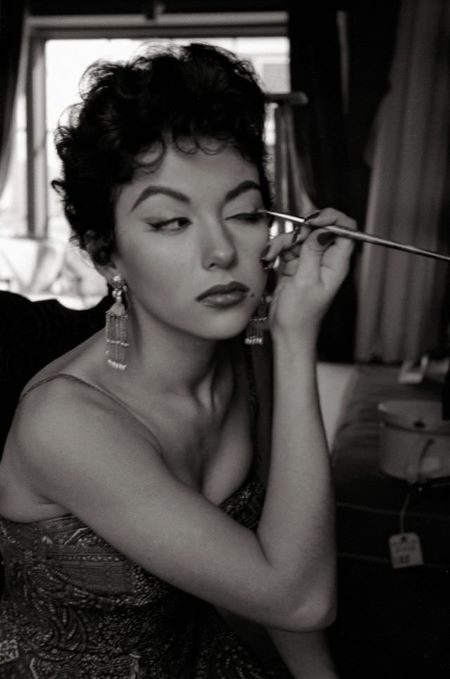 Like most girls, Puerto Rican beauty Rita Moreno also battled breakouts throughout her earlier years. To get rid of the acne marks, she used to scrub her face with a brush with rough bristles. Looking back, she does admit that it was quite an aggressive method, but says that the daily exfoliation did pay off as it drastically improved her complexion.
Like most girls, Puerto Rican beauty Rita Moreno also battled breakouts throughout her earlier years. To get rid of the acne marks, she used to scrub her face with a brush with rough bristles. Looking back, she does admit that it was quite an aggressive method, but says that the daily exfoliation did pay off as it drastically improved her complexion.
For today’s gentler equivalent of a rough brush, I highly recommend a Konjac sponge. A natural sponge found in the ocean, konjac can be used every day along with your daily cleanser as it gently cleans and brings fresh blood to the surface.
Rita Moreno is gorgeous and moving in the 1961 film West Side Story, with Natalie Wood. Highly recommend.
For Collagen Support
While all acids promote collagen development, studies have shown that glycolic acid is the most effective for this specific goal, as its molecular structure has been found to stimulate cell turnover the most. That being said, it should come as no surprise that it’s the ingredient most often found in anti-aging products, as more collagen means fewer lines and wrinkles.
This exfoliating solution from Summer Fridays does exactly that, with 16% glycolic and lactic acid. While the AHA percentage is quite high, the lactic acid does make it more compatible for dry and sensitive skin types.
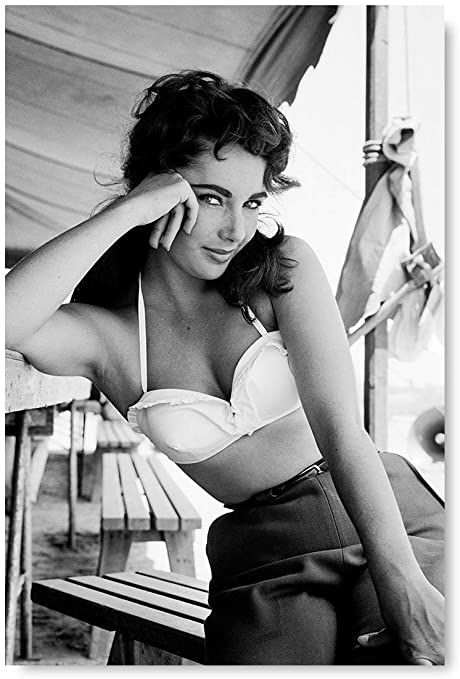 Elizabeth Taylor’s Anti-Aging Secret
Elizabeth Taylor’s Anti-Aging Secret
Taking cues from Cleopatra herself, Elizabeth Taylor would regularly shave her face to remove baby hairs and exfoliate dead skin cells, claiming that this method was responsible for her facial-like glow. It’s a trend amongst some women these days too but I’d rather be safe and use an AHA myself.
Ms. Taylor proves she was a lot more than a pretty face in the 1966 film Who’s Afraid of Virginia Woolf? which co-stars her spouse Richard Burton. It’s a not-to-be-missed performance.
For Brighter Color
Packed with antioxidants and anti-inflammatory properties, fruit-based acids like malic and tartaric acid are great if you’re looking to get a rosier complexion. As these acids help promote blood flow, your skin cells are able to get proper nutrients from oxygen-rich red blood cells.
Designed with sensitive skin in mind, this Resurfacing Liquid from First Aid Beauty is made from 10% AHA, with a potent yet non-irritating blend of glycolic, lactic, malic and tartaric acids. What’s more, it also contains nourishing ingredients from aloe, oatmeal and hyaluronic acid, making it suitable for daily use. The brand claims that the product will work for a variety of skin types, and solves not just dullness, but also texture and fine lines. Definitely adding this one to cart!
 Katherine Hepburn’s DIY Face Scrub
Katherine Hepburn’s DIY Face Scrub
Katherine Hepburn has always had a more natural approach to beauty, and this also shows in her skincare routine. The actress was known to be very diligent when it came to exfoliation, and usually combined kitchen ingredients like lemon and sugar for a quick and brightening face scrub.
To see her beauty in action, check out The Philadelphia Story from 1940, with Cary Grant and Jimmy Stewart.
For Hydration
AHAs like glycolic and lactic acid are especially great for attracting water into the skin, as well as increasing product absorption. So if you’re looking for an instant hydration boost, here’s yet another multipurpose product for you.
This 3-in-1 hydrating night serum from Farmacy resurfaces, hydrates and clarifies the skin, promising a healthier and more youthful complexion. Made from 14% AHA, BHA and gentle flower acids, you’re sure to wake up to glowing and revitalized skin. What’s more, it’s got hyaluronic acid to make sure your skin stays soft and supple even after exfoliation.
Mae West’s Simple Moisturizing Routine
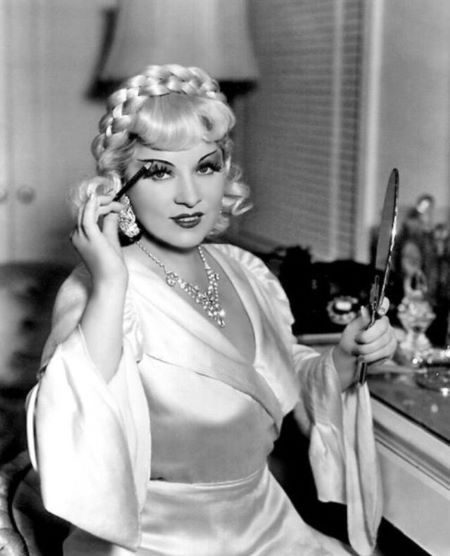 The ‘30s star credits coconut oil for her youthful glow both on and off-screen, and says that she would apply it on her face and neck as a moisturizer daily.
The ‘30s star credits coconut oil for her youthful glow both on and off-screen, and says that she would apply it on her face and neck as a moisturizer daily.
See her in I’m No Angel from 1933, with Cary Grant.
Conclusion
While there are always new innovations in skincare, AHAs have stood the test of time, so play around and see which ones work best for you. You won’t be sorry!
What are your favorite AHA/BHA products? Share your comments and questions in the Comments’ section below!
For a review of another very popular AHA/BHA product, this time from The Ordinary, see How Good is the Ordinary?

